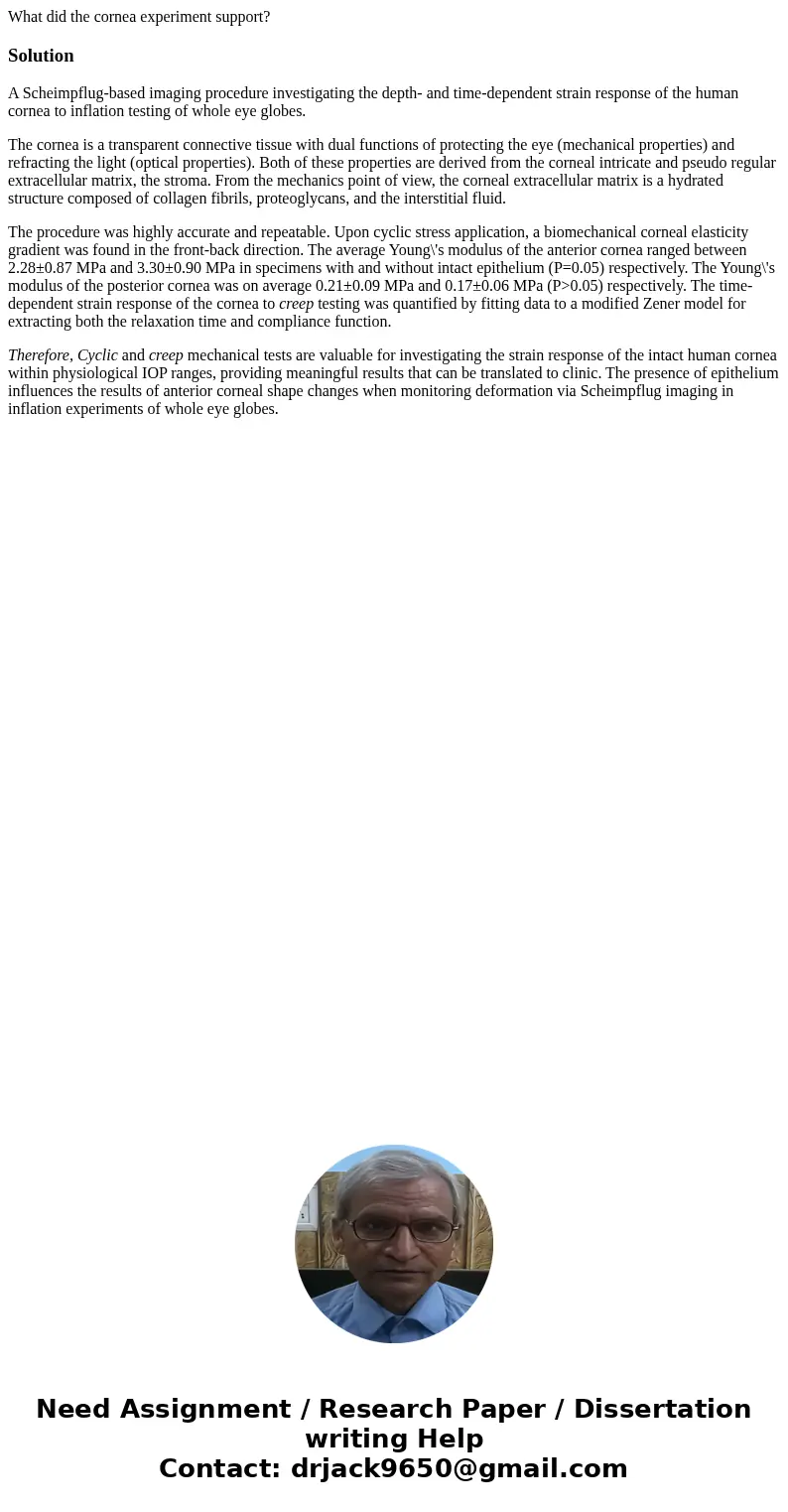What did the cornea experiment supportSolutionA Scheimpflugb
What did the cornea experiment support?
Solution
A Scheimpflug-based imaging procedure investigating the depth- and time-dependent strain response of the human cornea to inflation testing of whole eye globes.
The cornea is a transparent connective tissue with dual functions of protecting the eye (mechanical properties) and refracting the light (optical properties). Both of these properties are derived from the corneal intricate and pseudo regular extracellular matrix, the stroma. From the mechanics point of view, the corneal extracellular matrix is a hydrated structure composed of collagen fibrils, proteoglycans, and the interstitial fluid.
The procedure was highly accurate and repeatable. Upon cyclic stress application, a biomechanical corneal elasticity gradient was found in the front-back direction. The average Young\'s modulus of the anterior cornea ranged between 2.28±0.87 MPa and 3.30±0.90 MPa in specimens with and without intact epithelium (P=0.05) respectively. The Young\'s modulus of the posterior cornea was on average 0.21±0.09 MPa and 0.17±0.06 MPa (P>0.05) respectively. The time-dependent strain response of the cornea to creep testing was quantified by fitting data to a modified Zener model for extracting both the relaxation time and compliance function.
Therefore, Cyclic and creep mechanical tests are valuable for investigating the strain response of the intact human cornea within physiological IOP ranges, providing meaningful results that can be translated to clinic. The presence of epithelium influences the results of anterior corneal shape changes when monitoring deformation via Scheimpflug imaging in inflation experiments of whole eye globes.

 Homework Sourse
Homework Sourse